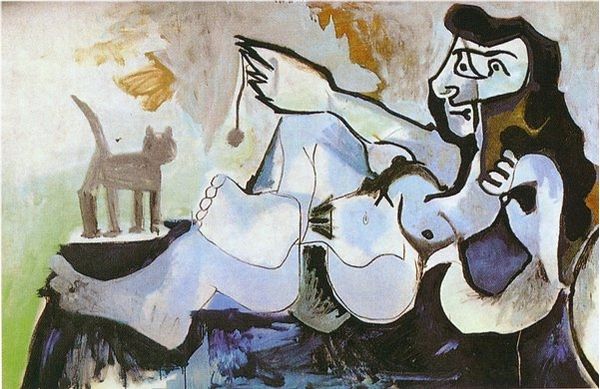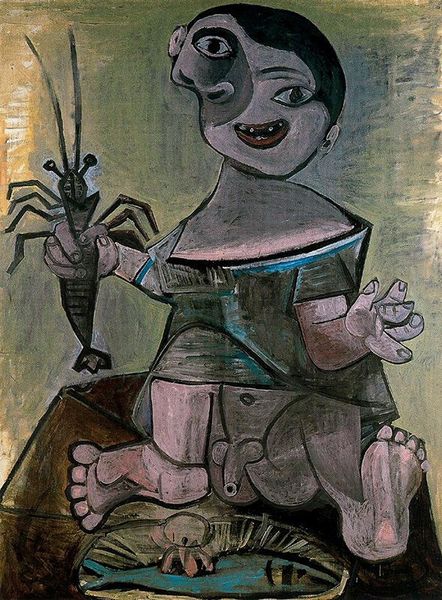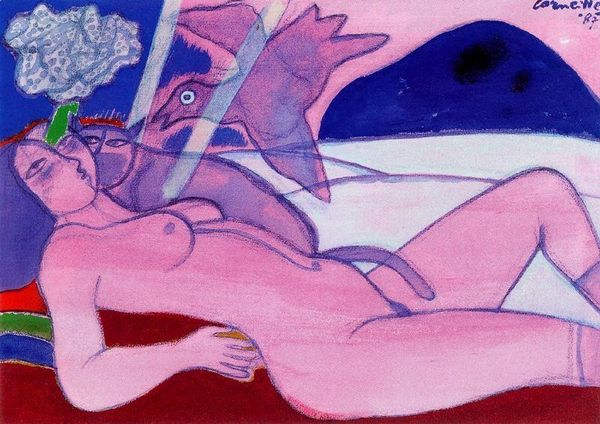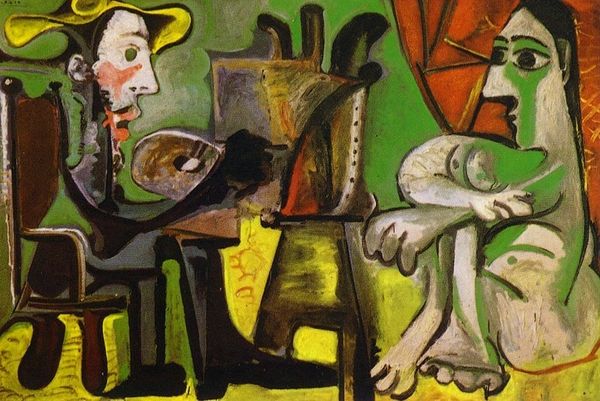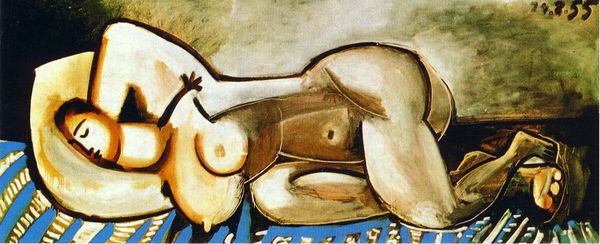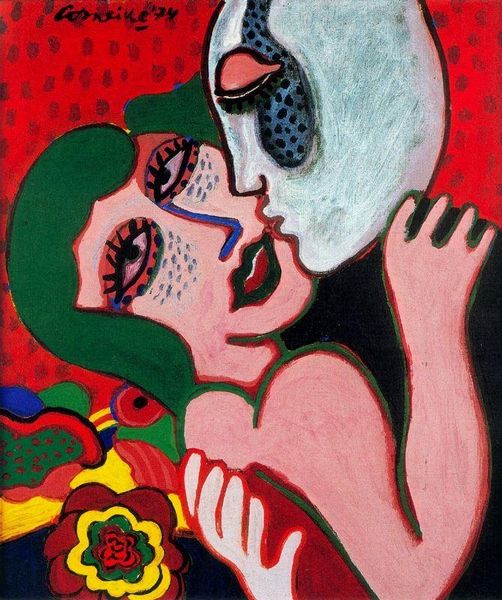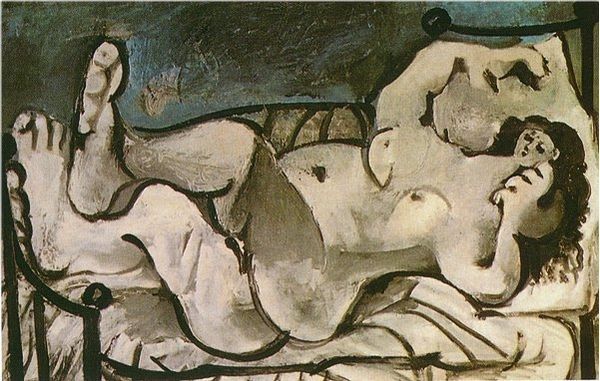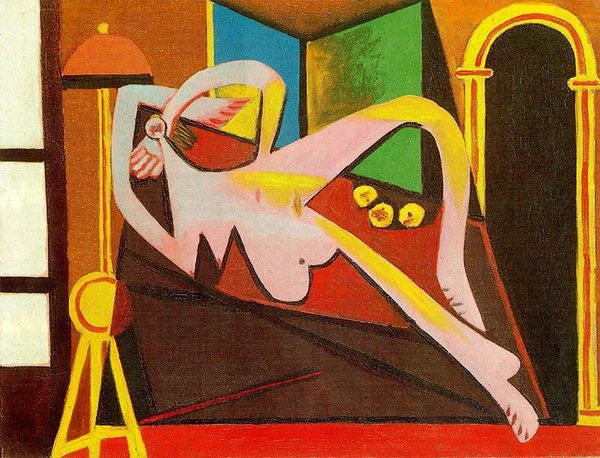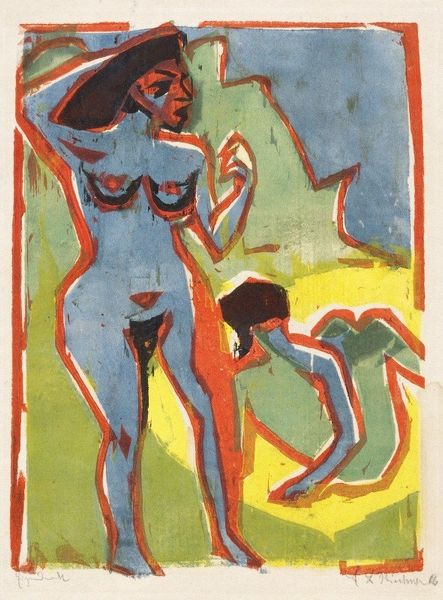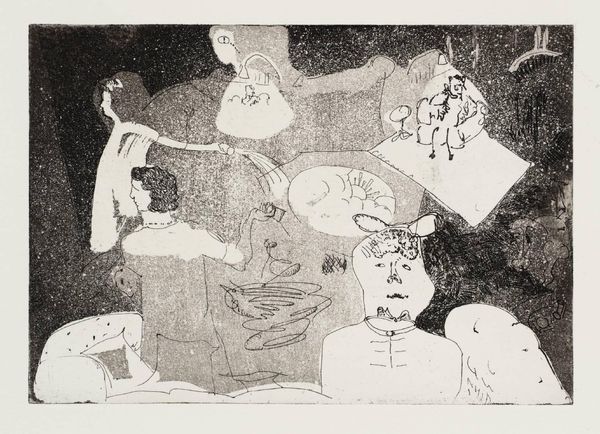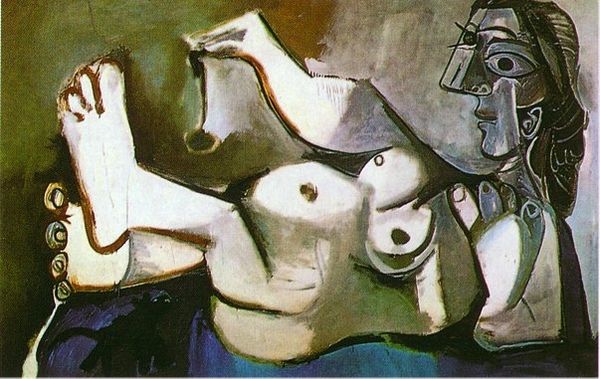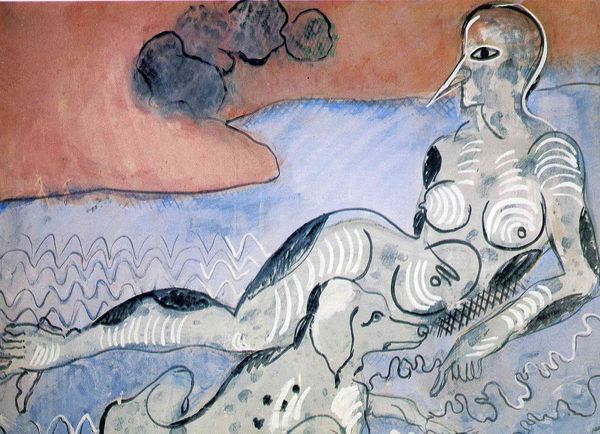
Dimensions: 119 x 194 cm
Copyright: Pablo Picasso,Fair Use
Curator: Looking at this canvas, I feel a sense of distorted tranquility. It’s unsettling yet strangely comforting. Editor: This is "Lying female nude with cat," an oil on canvas that Picasso completed in 1964. Curator: Picasso painted so many reclining nudes; how does this one sit within his body of work and the reception of nudes at the time? I'm particularly struck by how fragmented she is, almost broken apart but still graceful. What does the presence of the cat add? Editor: Well, within the context of Picasso's personal life at this time, the nude figure can be interpreted through his relationships with women and how they’re positioned as objects of intimacy and observation. Remember how art institutions historically have both celebrated and scrutinized representations of the female form. In the early 1960s, second-wave feminism was gaining traction, beginning to challenge conventional views on gender and sexuality. The painting exists within those discourses of power and representation. The cat, traditionally associated with the feminine, intensifies this atmosphere. Curator: Absolutely, that tension is palpable. What do you make of Picasso's rendering style here, those angular forms and almost primitive strokes? To me, they speak volumes about objectification and control—how he sees the female body as something to deconstruct and reshape at his will. The subject is indeed at his disposal. And yet the cat has agency and watches from her position of power on her chest. Editor: Exactly. This also calls attention to Picasso’s process. Cubism wasn't just a formal experiment; it became a way to destabilize perspective and question societal norms through the fracturing of form. His political beliefs at the time, in favour of socialist reform and democratic equality for Spain and worldwide, made him determined to break traditional art molds. Curator: Thanks to this piece, I'm reconsidering how male artists portrayed women and what it says about gender dynamics back then—and still today. Editor: It serves as a mirror reflecting cultural and power dynamics as they were, as they are today, but also it hints at a space for reassessment.
Comments
No comments
Be the first to comment and join the conversation on the ultimate creative platform.
